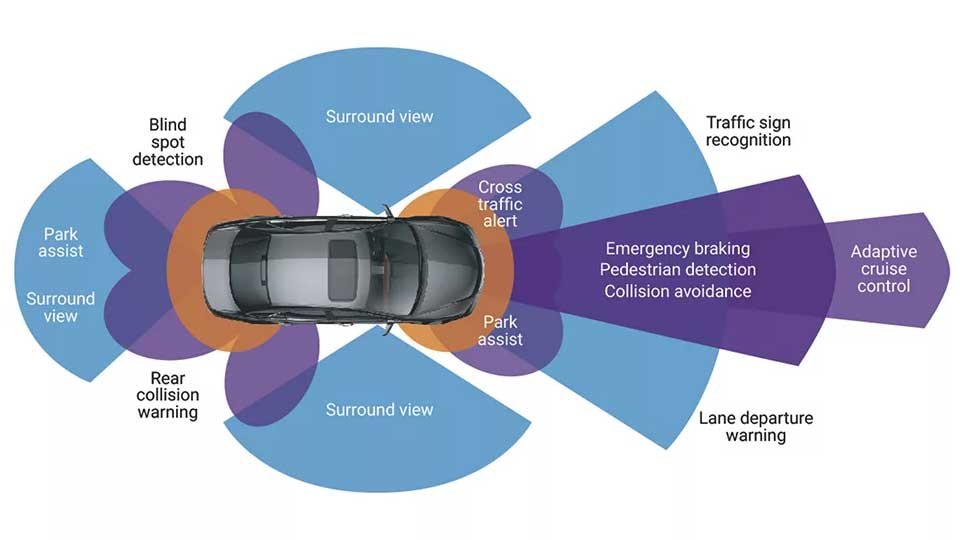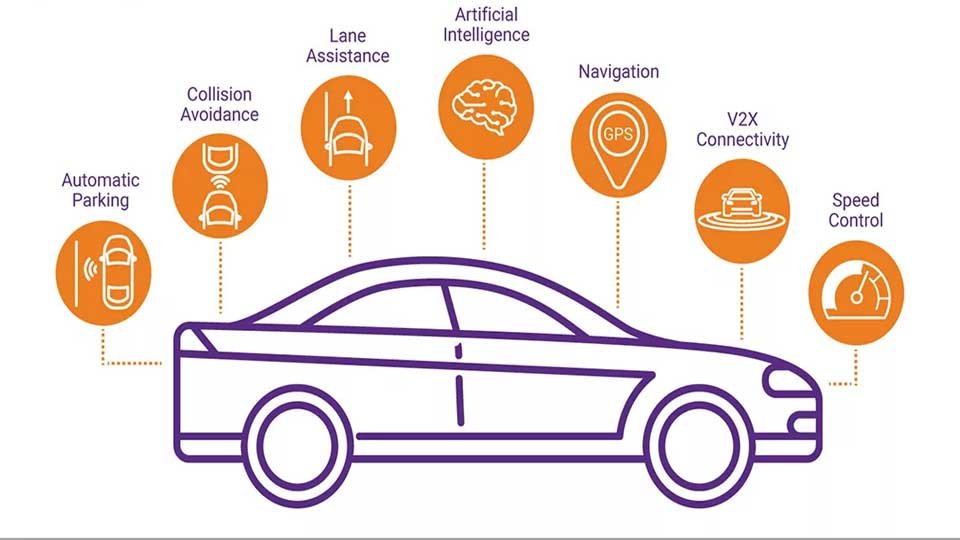Table of Contents
ToggleWhat is ADAS? How does ADAS ensure driver safety?
Most automobile accidents are caused by human error, which can be mitigated through Advanced Driver Assistance Systems (ADAS). The role of ADAS is to prevent fatalities and injuries by reducing the number of automobile accidents and the severity of those accidents.
Some important ADAS safety applications include:
- Pedestrian detection/avoidance
- Lane departure warning/assistance
- Traffic sign recognition
- Automatic emergency braking
- Blind spot detection
These life-saving systems are the key to the success of ADAS applications. They incorporate the latest interface standards and run multiple vision-based algorithms to support real-time multimedia, vision co-processing, and integrated sensor fusion systems.
How does ADAS work?
Autonomous vehicles leverage various applications and technologies to achieve a 360-degree view, both near (in the vehicle’s vicinity) and far. This means hardware designs are employing more advanced process nodes to meet higher performance targets while reducing power and footprint requirements.

What are some ADAS applications?
Significant advancements in automotive safety in the past (e.g., laminated glass, three-point seatbelts, airbags) are passive safety measures designed to minimize injuries in the event of an accident. Today, ADAS systems actively improve safety with integrated vision to reduce accidents and injuries for occupants.
Deploying cameras in vehicles involves new AI functionality using sensor fusion to identify and process objects. Sensor fusion, similar to how the human brain processes information, combines large datasets with the help of image recognition software, ultrasound sensors, lidar, and radar. This technology can react physically faster than human capabilities. It can analyze live-streamed video in real-time, recognize displayed video content, and determine reactions to that video.

Here are some common ADAS applications:
- Adaptive cruise control
- Adaptive headlighting and glare-free high beams
- Adaptive light control
- Automated parking
- Automated parking services
- Navigation system
- Night vision
- Blindspot monitoring
- Automatic emergency braking
- Crosswind stabilization
- Driver drowsiness detection
- Driver monitoring system
- 5G and V2X
Why is ADAS important?
The opportunity to minimize automobile accidents is making ADAS more critical. Automatic emergency braking, pedestrian detection, surround view monitoring, parking assistance, driver drowsiness detection, and gaze detection are some ADAS applications that play a crucial safety role in reducing car accidents and saving lives.
What is the future of ADAS?
The increasing number of automotive electronic hardware and software demands significant changes in today’s car design processes to address the convergence of conflicting goals:
- Increase reliability
- Reduce costs
- Shorten development cycles
The trend is shifting from distributed ADAS electronic control units (ECUs) to more integrated ADAS domain controllers with centralized ECUs. This means we are currently at a level that SAE International designates as Level 2 (Partial Driving Automation), where the vehicle can control both steering and acceleration/deceleration but cannot drive itself as a human is sitting in the driver’s seat and can take control of the vehicle at any time.



